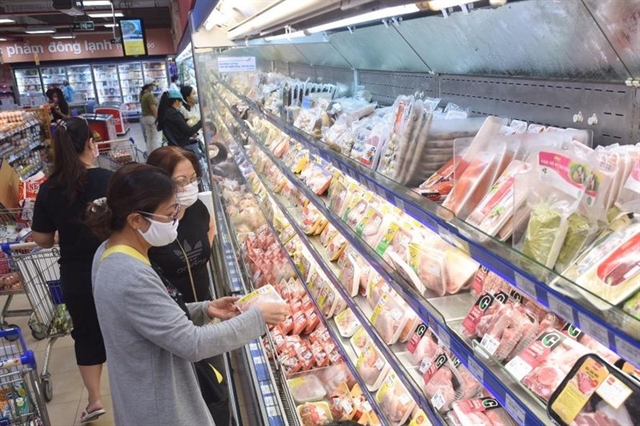 Economy
Economy


|
| Meat and poultry will account for 29.9 per cent of total household food budgets by 2025. — Photo plo.vn |
HÀ NỘI — The average Vietnamese household will spend 20.8 per cent of their total household budget on food in 2025, marginally increasing from 20.1 per cent in 2005, according to global financial services provider Fitch Solutions.
“Over the 2005-25 period, we note that food spending will grow by an annual average of 13.6 per cent, compared to the annual average inflation rate of 6.5 per cent over the same period, indicating real growth in food spending. As a result, there are certain instances of shifts in dietary spending stemming from income growth, with consumers spending a lesser proportion of their food spending on fish, diversifying their palate and opting for food not commonly found in their country,” Fitch said in a recent report.
According to Fitch, when breaking down the average Vietnamese household spend on food, three food categories, including bread, rice and cereals; meat and poultry; and fish and fish products, will account for more than 70 per cent of total food spending in 2025.
Of which, staples - bread, rice and cereals - will account for the largest share, at 36.9 per cent of total food spending; meat and poultry at 29.9 per cent; and fish and fish products at 10.5 per cent. These three food categories will see their share of total food spending decrease marginally, from 79.3 per cent of total food spending in 2005 to 77.2 per cent in 2025.
“Within the three dominant food categories, we highlight that Vietnamese consumers spending on rice will be the largest share of the staples spending category, at 88.1 per cent in 2005 and 87.7 per cent in 2025,” Fitch said, noting the decline in spending on fish and fish products was due to the lower annual inflation of fish prices, compared to other food products such as meat and poultry, and not a result of decreasing fish consumption.
Between 2005 and 2025, Fitch said Vietnamese households would allocate a larger portion of their total food spending towards meat and poultry, increasing from 29.2 per cent of total food spending in 2005 to 29.9 per cent in 2025. Collectively, total meat consumption (beef, pork and poultry) per capita will grow by a compound annual growth rate of 3.6 per cent, increasing from 24.8 kg in 2005 to 50 kg in 2025.
Pork will remain the most consumed meat throughout the period, accounting for 61.1 per cent of total meat and poultry consumed in 2025. On the other hand, poultry will see the largest consumption growth, growing from per capita consumption of 3.8 kg in 2005 to 15.7 kg in 2025.
All three categories of meat will see growth surpass average headline food spending growth of 6.5 per cent per year. Spending on pork and poultry will grow by an annual average of 13.9 per cent and 14.6 per cent respectively, while spending on beef will grow by an annual average of 14.4 per cent.
According to Fitch, fresh and preserved fruits will be the top performing food category between 2005 and 2025, with annual average spending growth of 17.1 per cent during this period. This growth will see the fresh and preserved fruits proportion of total food sales increase from 3.4 per cent in 2005 to 5.8 per cent in 2025, making fresh and preserved fruits the category of food with the biggest increase in share of food spending.
Việt Nam is home to a wide variety of rare tropical and exotic fruits, such as langsat, mangosteen, rambutan, longan and many other fruits not commonly found in other parts of the world. However, in recent years Vietnamese consumers are consuming more imported fruit, which is generally more expensive, despite having an abundance of fruit domestically. — VNS









